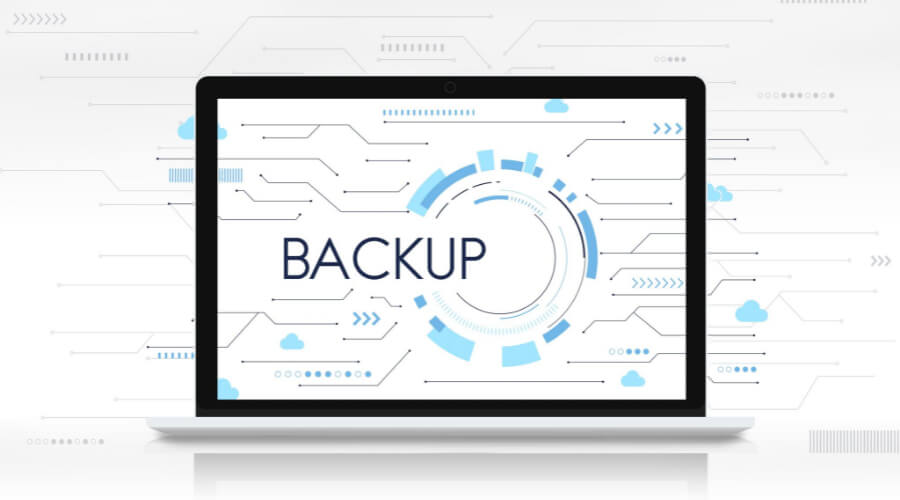Data backup is a method of storing a copy of important data elsewhere so that it may be used to restore the original version of data after a data loss event. There are different ways available to back up the data. In this article, we will discuss the pros and cons of different data backup methods and decide which one is best for you.
Key Takeaways
- Data is the lifeblood of a business so losing data can cause huge damage and disrupt business operations
- There are quite a few types of data backup methods available like full backup, incremental backup, differential backup, mirror backup, etc.
- If you make a full backup of your data, then you will be able to quickly and easily restore all the data after a disaster
- You should try to find the right backup plan that meets your requirements and choose accordingly
What Is Data Backup?

In information technology, data backup is the process of copying data from a primary location to a secondary location in order to protect the data from an accident or malicious action and recover it if the original data is lost or corrupted. Data is considered the lifeblood of businesses, organizations, corporations, etc., and losing data can cause huge damage and disrupt business operations. This is why data backup is very important. Data backup means storing all the important data that includes documents, media files, configuration files, machine images, operating systems, registry files, etc.
Different Data Backup Methods And Their Pros & Cons
There are quite a few different methods available to backup data. They are –
1. Full Backup
2. Incremental Backup
3. Differential Backup
4. Mirror Backup
1. Full Backup

You might get an overview of this data backup method from the given name. Just as the name suggests, a full backup is a copy of the complete source data. According to many data specialists, this is the best data backup method because it will allow you quickly and easily restore all the data after a disaster. Usually, full backup requires lots of time compared to other data backup methods therefore, if you want to backup your data every day or weekly then this is not the right data backup method for you. So, the best solution is to do a full data backup first and then apply smaller and less intensive, backup methods for daily and weekly data backup.
Pros Of Full Data Backup
1. This is the most convenient way to recover data after any data loss
2. Easy method for storage and management
3. Provides the best protection for your data
Cons Of Full Data Backup
1. Time-consuming process
2. Resource heavy
3. Consumes lots of storage spaces
4. Chance of losing everything if there is any problem with the backup file
2. Incremental Backup

This is a backup method where the data will be backed up if any changes have happened since the last time you performed a backup of any kind. This method decreases the amount of time and resources needed to perform the backup. You can combine this backup method with a full backup method. For example, you can do a full backup once a week. Then, for the rest of the week, you can just backup any changes made to files each day with the incremental backup method. This way you can make the data a lot cheaper to store in the cloud.
Pros Of Incremental Backup
1. Very easy to backup
2. Don’t need much time to backup
3. Reduce the overall cost of the data backup
4. Low storage requirements
5. Perform the method regularly
Cons Of Incremental Backup
1. Restoring data takes much time
2. Requires a full backup
3. Recovery requires the piecing together of data from different sets
4. Chance of losing all the data if one or more backup sets has failed
3. Differential Backup

This data backup method is a combination of a full and an incremental backup. First, this method works the same as incremental backups. Then there will be a full backup and only changed data will be added afterward. Here the difference is, each increment isn’t just backing up data from the most recent backup, but the last full backup. So, it means the storage requirements will increase throughout the week. The advantage of this method is, you only need to do a full backup once and then you only have to do the most recent differential backups.
Pros Of Differential Backup
1. Needless restore time than incremental backups
2. Require less storage space than a full backup
3. Only two backups are required for recovery
Cons Of Differential Backup
1. Require more restoring time than a full backup
2. Require more storage spaces than incremental backups
3. Chance of losing all the data if one or more backups are incomplete
4. Mirror Backup
This type of backup is also known as a full image backup. In this backup method, there will be a copy of the source data set and only the latest version of the data is stored. This method won’t track any changes and all the backup files are stored separately. The source data is also stored separately rather than in compressed backup files like the other methods. So, this method allows quick access to the data file and you can access individual files instead of restoring the whole recovery file which is very convenient.
Pros Of Mirror Backup
1. Fast data recovery
2. Access to individual files/folders
Cons Of Mirror Backup
1. Large storage space is required
2. Costly than other data backup methods
3. Adverse modifications to the source data affect the mirror backup
How To Decide The Right Data Backup Method
If you closely check the above information then you will see, each data backup method has its advantages and disadvantages. So, instead of looking for the best data backup method, you should look for the right data backup method for your organization. You should try to find the right backup plan that meets your requirements. Nowadays, many companies develop a combined approach for data backups that could look like one of the following options –
1. Full daily backup
2. Full weekly backup and a differential daily backup
3. Fully weekly backup and an incremental daily backup
When picking a data backup method, you should keep in mind that each method carries its own benefits and risks so you should consider your need for performance, data protection, the total volume of data assets, cost of recovery, etc. before making the final decision. You can check the five questions below to decide which backup schedule is right for you –
1. How Active Are Your Read/Write Activities?
2. What Is Your Tolerance for Recovery Time?
3. How Many of Your Data Assets Are Actively Being Update?
4. How Much Storage Space Can You Dedicate?
5. How Much Data Do You Have?
The 3-2-1 Backup Strategy
A 3-2-1 backup strategy is a method that ensures your data is effectively duplicated and constantly recoverable. Here are the details of this strategy –
1. Three Copies Of Data: According to this strategy you must have three copies of your data that includes your original data and two duplicates. It ensures that if you lost a backup or if your backup file is corrupted then it won’t affect recoverability.
2. Two Different Storage Types: According to this strategy, you should use two different storage types to reduce the risk of data recovery failures. You can use internal and external hard drives, removable media, or cloud storage and backup your data.
3. One Copy Off-Site: It eliminates the risk associated with a single point of failure. Offsite duplicates ensure quick data backup recovery and allow for failover during local outages.
Data Backup Options
There are many ways you can store your backup data or files. Choosing the best option will ensure that you’re backed-up data is stored safely. Below are six of the most common data backup options –
1. Removable media
2. Redundancy
3. External hard drive
4. Hardware appliances
5. Backup software
6. Cloud backup services
Final Thoughts
So, these are some data backup methods that you can use for your organization. You can opt for full backups on a daily basis or a weekly full backup and daily differential backups depending on your requirement. Finally, regardless of what data backup method you choose, make sure you keep two or three copies of your backup files to avoid any risk of losing the data because of file corruption.
References:
1. https://cloudian.com/guides/data-backup/data-backup-in-depth/
2. https://www.techopedia.com/definition/23338/data-backup
Last Updated on November 5, 2022 by Magalie D.

Magalie D. is a Diploma holder in Public Administration & Management from McGill University of Canada. She shares management tips here in MGTBlog when she has nothing to do and gets some free time after working in a multinational company at Toronto.





